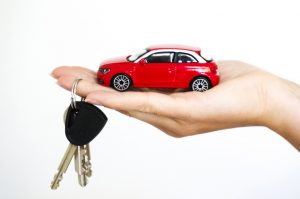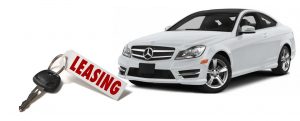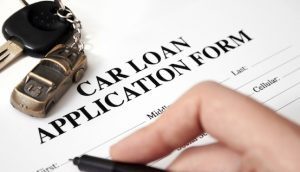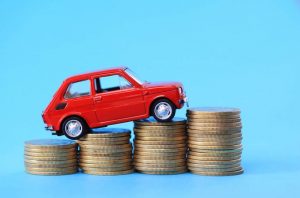Guest Post by Eric Peters

How much can you afford to spend?
This is the first thing and the most important thing you should think about before you get serious about shopping for a car – whether new or used.
Note the distinction between afford and can spend.
It is the difference between what they will loan you and the amount you can comfortably afford.
You might not appreciate this distinction until after you sign the paperwork; and that can lead to a world of financial hurt.
It is my sincere desire to provide readers of this site with the best unbiased information available, and a forum where it can be discussed openly, as our Founders intended. But it is not easy nor inexpensive to do so, especially when those who wish to prevent us from making the truth known, attack us without mercy on all fronts on a daily basis. So each time you visit the site, I would ask that you consider the value that you receive and have received from The Burning Platform and the community of which you are a vital part. I can't do it all alone, and I need your help and support to keep it alive. Please consider contributing an amount commensurate to the value that you receive from this site and community, or even by becoming a sustaining supporter through periodic contributions. [Burning Platform LLC - PO Box 1520 Kulpsville, PA 19443] or Paypal
-----------------------------------------------------
To donate via Stripe, click here.
-----------------------------------------------------
Use promo code ILMF2, and save up to 66% on all MyPillow purchases. (The Burning Platform benefits when you use this promo code.)
Such as: Being on the edge of broke for the next six or seven years. And – worse – not having enough ready cash left for other things that come up during the next six or seven years, after you make your monthly payment. When that happens, you face the not-good alternatives of going into additional debt (credit cards) or not being able to pay for the thing that “came up” which you can’t afford because you can barely afford the car.
There is a rule-of-thumb in real estate that a monthly mortgage payment should not exceed 28 percent of your annual income before taxes. If you have a mortgage – or rent – consider that your car payment will be a percentage of whatever you have left after you pay the mortgage/rent – plus whatever it costs you for utilities, food, clothes, Internet and other basic expenses.
For most people, these incidentals eat up another 25-30 percent of annual income. Don’t forget to factor in health insurance – or the Obama Fine you’ll be forced to pay if you don’t buy a policy – as well as any other expenses, such as alimony or child support.
While your mileage may vary, for most people there is about 30-35 percent of whatever you make each year available for additional or discretionary spending. Some people have much less; for instance, those who got in too deep on their credit cards and now have a monthly payment for that to figure in.
Hopefully, you can see that it is really important to do this math.
And then ask yourself: How much can I comfortably afford to spend on a car payment each month, given what I have to spend on other things – and taking into account what I may have to spend on things that “come up.”
This number will be significantly less than what you could, in theory, afford to spend.
And it will also be well below what the salesman will almost certainly do his very best to convince you to spend, since that’s how he makes his money (on commission, as a percentage of the sale price of the car).
But, consider: How likely do you suppose it is that, over the next six or seven years, you will face a big bill for something you didn’t expect? What if your pet gets sick and has to have surgery? What if your roof springs a leak or the washer/dryer croaks?
Such things happen.
Several of them could happen.
If they do, will you be able to afford that and the car?
Speaking of which: Even if it’s new, you will eventually be paying for tires and brakes and oil changes, too.
And before you’ve paid off the loan, probably.
Many new car basic warranties – the warranty that covers the whole car – often don’t last more three years and 36,000 miles. If something fails that’s no longer covered by the warranty, you get the bill.
Have you got cushion enough to cover it?
…
So – how do you figure out what you can comfortably afford?
You calculate the maximum you could theoretically afford to spend each month, leaving almost nothing left over for discretionary purposes or savings for things that “come up.”
And then cut that amount by at least a fourth if not a full third.
That is what you can comfortably afford to spend on a car – whether new or used – as opposed to what can be financed, the debt load they will try to saddle you with.
It will probably seem like not much to spend. That’s because we’ve become so used to over-spending, to equating credit with affordability. To spending the maximum possible and living on the edge rather than living within – or even below – our means.
Here’s a stat for you: The average new car loan is now six years, going on seven – about twice as long as it was 30 years ago. The longer duration of loans today is done to spread the principle out and make the huge sum appear manageable. This is a financial pratfall – because by the time most cars are seven or eight years old, they have depreciated to about half or even less what they originally sold for.
It’s easy to find yourself under water – owing more than the car is worth.
But the reason for the rise of the Endless Loan isn’t because cars have become so much more expensive. In fact, there are many new cars available that, on an inflation-adjusted basis, cost about what a new car cost back in 1970.
The catch is that other cars cost two or three times as much as the typical car used to cost – and these cars are the cars it takes six or seven years to finance, at a payment that’s often not far off what an average person/family pays for rent or toward their mortgage each month.
For example, it is not uncommon for people to spend $40,000 on a minivan – or $50,000 on a pick-up truck. These formerly utilitarian and once modestly priced vehicles are frequently loaded up with heated leather seats, DVD entertainment systems, ten speaker stereo rigs, 19-inch wheels and automated/electrically operated pretty much everything (even including a power-actuated sliding rear window in new trucks).
All very nice. Just not very affordable.
Unless your income is high enough to allow you to comfortably afford such a car, as outlined above.
If so, good for you.
If not, think twice.
Part of the lure is very low (or even nonexistent) interest on the loan – if it’s a new car. But even at zero percent, keep in mind that your payment isn’t going to be zero.
And there is also the opportunity cost of the money you’ve committed toward that car payment. Meaning, money that won’t be available for other things – including things you can’t anticipate but which (when they pop up) you’ll have to find the money to pay for- like a medical bill or necessary home repair.
Hence comfortably afford.
It’s a smart rule to live by.
Keeping things under control –
One way to keep payments manageable – and not interminable – is to save up a large down payment – 20 percent of the purchase price, at least – so that you finance less, and for a shorter period of time.
“Zero down” on a car loan is, arguably, even more reckless than a “zero down” mortgage – not only because it encourages you to bite off more than you can chew but also because a car, unlike a house, is a depreciating appliance and not an “investment.”
A car is a very expensive toaster that you use for a period of time, until it wears out – and then it generally gets thrown away. It is not a store of value as a house or land still is.
What you are buying is transportation – a way to get around for a period of time.
And your ticket to ride has an expiration date.
Saving up a large down payment also disciplines you to get a handle on what you can comfortably afford. It is also a way to treat yourself to a little more than you can afford, since the payments will be less (and the loan shorter) if you start out with a smaller principle, based on a 10 percent or even more down payment.
How about leasing?
First, understand that this is basically a form of renting.
You will never own the car – unless you decide to purchase it at the end of the lease; more on that in a minute. Instead, you sign what amounts to rental contract for two or three years (typically) and at the end of the lease contract, you return the car.
There are several upsides – and several downsides – to leasing.
Upsides:
• Your monthly payment will be significantly lower vs. buying the same car because you are not buying the car. You are renting it, the rental/lease payment based on the car’s expected depreciation over the duration of the lease.
• Because the monthly lease payments are lower, you can afford more car than if you bought. For example, you could lease a luxury car for say $400 a month vs. buying a generic family car for about the same monthly payment.
• You will not have to worry about repairs or maintenance – or resale/trade-in value. Most lease contracts include regular scheduled maintenance and any repairs needed should be covered by the warranty, which will generally last as long as the lease does. Resale value is irrelevant because at the end of the lease, you do not sell the car or trade it in. You simply hand the keys over.
• You drive a new car in perpetuity.
Downsides:
• You will be making payments in perpetuity; you will have no equity or ownership stake in the car. At the end of the lease contract, you will have to either: Buy the car (the price will usually be based on the amount negotiated at the lease inception), buy or lease another car . . . or walk.
• Lease payments are based on expected depreciation rates; vehicles that have higher-than-average depreciation rates will cost more to lease.
• There may be hidden/unexpected costs associated with the lease. The two biggest are fees associated with exceeding mileage restrictions and any damage to the car found at the end of the lease.
• Most lease contracts stipulate a maximum allowed mileage, for the obvious reason that the more miles accrued, the less the car is worth on the secondary market (at the end of its lease, when it goes back on the lot for sale as a used car). If you put more miles on the car than the maximum allowed, the lease issuer will ding you for every mile over the maximum. It can add up to a lot of money.
So should you lease?
Or buy?
For some people, it can make more financial sense to lease because they pay less per month for the car they need, which frees up money they would otherwise have had to spend on a monthly car payment (toward purchase). The opportunity cost is lower. There may also be tax advantages, if you can write-off the cost of the monthly lease payment as a business expense. Realtors and others who use their car for work can do this; ask your accountant.
For others, the payoff is a paid-for car – eventually – that eliminates monthly car payments entirely. And there is the equity stake you will have in the car as the owner of the car. Also, as the owner of the car, you are free to modify it to your liking – and if someone dings the door, you don’t have to get it fixed.
Cash on the table –
Another option is to buy the car outright. Not easy, but possible. Much more so with a used car.
The obvious upside being you won’t have a monthly payment at all. Which means you will have money for things that inevitably come up. There will be no opportunity costs to bear.
![]() Zero dollars will be tied up each month making payments.
Zero dollars will be tied up each month making payments.
Also, if you buy a car outright, you will have equity in the car itself – right now, not five or six years from now.
If things got tight, financially, you could always sell the car – and the money would go in your pocket, not to a lender. A paid-for car is fungible – a thing of value that can be converted into other things of value, such as cash.
You can also save money on insurance if you pay cash – because if there is no lienholder, you can choose to buy a basic/state minimum/liability-only policy. This will cover any damage you do to someone else’s car, but not pay to fix your car.
Is it a risk worth taking?
It depends on how safe a driver you are. Most “accidents” aren’t; they are the result of human error, not acts of god. That means they can be avoided. If you are the type of driver who doesn’t cause “accidents,” a liability-only policy is a reasonable risk and can save you a lot of money, especially when you factor it over a period of years.
But this is an option only if you aren’t making payments. If you are, you will have to carry full-coverage insurance. Because it’s not your car until the loan has been paid off.
Finding the money –
All right. You have crunched the numbers, done the math – and have a figure. You know what you can comfortably afford to spend. Now the question is – where will you get the money?
That is, where will you get the loan?
After the Big Mistake of spending too much money on the car, the Next Worst Mistake is spending too much money on . . . money.
If you haven’t already shopped for money before you go car shopping, you will probably be turned over to the dealership’s Finance and Insurance (F&I) guy, who will present you with a really great deal. . . for the dealership. Which you will be under a lot of pressure to accept, having (at this point) probably spent a lot of time haggling over the price of the car.
Having clawed your way through that mess, you’re invested in the deal – and worse, tired. You just want to sign the papers and go home.
Easy meat for the F&I guy.
Instead, shop for the money first.
A good place to start is the bank where you normally do business. But don’t stop there. Check out other banks and – if you have access to them – credit unions. Sometimes you have to be a member in order to get the deals on offer. Depending on the deal, it may be well worth joining a credit union.
Find out.
Also check out the financing deals offered by the captive financing arms of the various car companies – for example, GMAC and Ford Credit.
Sometimes, their deals are better than the deals offered by banks, but be aware there is always fine print. For example, the deal may only apply to certain (usually high-trim/high-cost) models, or some other thing. Also be aware that sometimes, these deals can’t be combined with other offers (such as cash back) and that could mean you end up spending more rather than less.
Be aware that your credit score will greatly affect the cost of money – the interest you end up being charged. Run a credit check on yourself before you do anything else and if your credit report has issues, address them. It could literally save you thousands of dollars in interest costs over the life of a car loan.
Bottom line: You want to walk into the dealership knowing exactly how much the loan is going to cost you – and where you are going to get it – as well as exactly how much you are able to spend.
This will leave you free to concentrate on the car rather than worrying about how you’re going to finance it.
Also, you can challenge the dealer’s F&I guy to make you a better offer.
Important: If the salesman asks how you plan to finance, don’t respond with specifics until after you have negotiated the sales price of the car. Reason? If you leave him with the impression that you haven’t already lined up financing, he will assume the dealership (via the F&I guy) will make a nice profit on that end of the deal and so be more apt to give you a better deal on the car.
Only discuss financing/payment arrangements once you have the sales price of the car nailed down in writing.
. . .
Do not neglect to factor in everything – not just the cost of the car.
This is the other Big Mistake people often make.
They forget to take into account the peripheral expenses associated with a car and its purchase and ownership that are just as real as the monthly payment. Things like insurance and personal property taxes, in states that have those.
Just as you shopped money prior to shopping for the car, you also ought to shop insurance – and get a handle on property taxes, too.
Cost to insure can vary hugely from car to car. If you are going from an older, paid-for car to a new car that you will be making payments on for the next six or seven years, it’s possible your insurance costs will double or even triple. Especially if you had a basic/state minimum/liability-only policy on the old (and paid-for) car vs. a full-coverage/comprehensive policy on the new.
Most insurance companies will give you a pretty specific quote over the phone; make the call.
Know – before you buy.
Same goes for the personal property tax on motor vehicles that several states have. These are based on the current retail value of the vehicle. You will pay more for a brand-new $30,000 car than you would for your eight-year-old car that has a book value of just $8,000.
You could end up paying $5,000 in property taxes over the next eight or ten years.
 Again, know what you’re looking at before you pull the trigger. If you don’t, you could end up not only losing the car (to repossession) but also your credit.
Again, know what you’re looking at before you pull the trigger. If you don’t, you could end up not only losing the car (to repossession) but also your credit.
Car-talk
• Captive finance arms – These are the car manufacturer’s in-house lenders. General Motors Acceptance Corporation (GMAC) is an example. They can be a good way to obtain financing, especially if you are a first-time buyer without an established credit history.
• Red tag sale – Watch out for these as they can be dodgy. The sale prices may only apply to certain high mark-up vehicles or vehicles not equipped the way you want. The dealers know this, but their goal is to get you into the store – where they can work on you to buy what you didn’t plan on buying.
• Under water – This simply means your loan balance is higher than the value than the car; it is a very real danger on long-term loans, due to depreciation – the fact that almost all cars lose value each year, on average about 5 percent for the first five or six years and then 10 percent or more after that point.
• Opportunity cost – This refers to what you could have done with money you don’t have because it’s been committed to some other thing, like a new car payment.
• Manufacturer – This is car industry jargon for the car companies. Ford is a manufacturer.
• Residual value – what the car is worth at the end of a lease. If you decided to buy the car at the end of the lease contract, this is the pre-agreed amount you’d have to pay.
…
This is an excerpt from Eric’s new eBook, Don’t Get Taken for a Ride! It will be given out free to all EPautos’ susbcribers, so if you’d like a copy, register! (See the top menu bar.) There will also be an audio version – stay tuned!





For years I bought new cars. BMW was the worst for repairs. I’ve owned (and for family) – six Volvos since 1985. I run them until they’re too ugly or undependable. The whole deal is the cost per mile. I was at the Volvo dealer the other day – man have they fucked up those cars – displays where you scroll them like a cell phone. Now 4 cylinder engines ( that’s a heavy car, I think it will really punish a 4 cylinder engine) – my 2008 is a 6 – I don’t know what make I will buy next – but it won’t be a Volvo.
At 68, the next car I’m going to buy is one that is coming off a 3 year lease, and I’ll buy an extended warranty.
I hear you about Volvos. I bought an 1998 S90 and it was a great car, so good I bought it when the lease expired; they even took off an extra $1000 from their projected residual value.
My advice today is buy a Prius. They’re so tough and reliable they’re being used as taxi cabs. Plus if you drive a lot you’ll save enough on gas to make the monthly payment if you finance it.
Another “car lingo” phrase to remember is “holdback”. Even if the dealer sells you a new vehicle at their invoice (in other words what they paid for it) there is still another couple of hundred dollars they receive from the manufacturer based on their gross annual sales. So if you’re in one of those cubicles (my Dad used to call them the “skinning room”) remember to lay this term on them when they tell you they’re paying you to buy their car.
Better yet, instead of losing 1/3 of the car’s value when you drive off the lot, look for a nice lease return with less than 50,000 miles and verify that with a carfax. And lots of times you can find an almost new used car directly from its one-owner for half the price of new.
Needed a car, but couldn’t afford monthly payments from a bank. Waited and waited.
In-laws retired, and decided they didn’t need two SUVs to get around anymore. They sold me a 2013 model at Blue Book, and let us pay it off over time. Lower payments on a great car that only had 16k miles on it. Check with your elderly relatives, it might save you a bundle and avoid enriching the banksters with money your relatives could use.
This is all good advice.
You’d be surprised at how many people buy a new car strictly because the want some special social recognition for owning it, transportation not figuring into the purchase at all.
And you’d be surprised at how many people judge you by the car you drive.
Why would we be surprised? Do you have special insight into these things?
Its pretty funny reading this. I work with a guy that just got a moderate inheritance from a deceased relative. He bought a slightly used truck, spend the entire amount of money on it, and then financed his wife a brand new one, at the same time. And now he is bitching about money. Nothing was wrong with either of their cars….Sometimes you just can’t fix stupid.